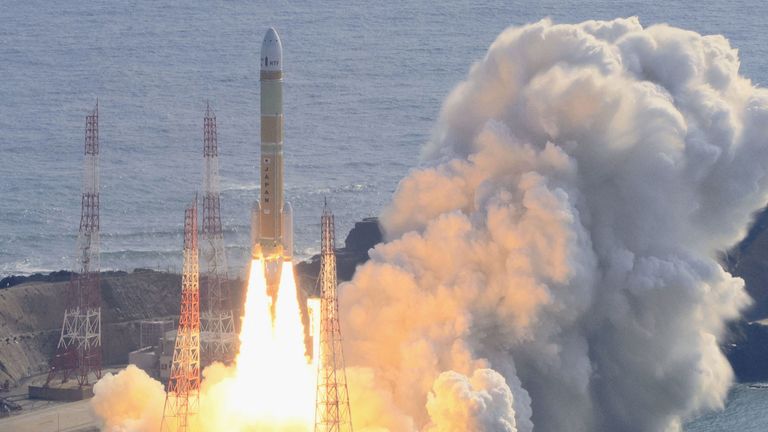Japan’s new H3 flagship rocket has reached orbit following a successful launch – in a key test almost a year after its debut flight failed.
H3 lifted off from the Tanegashima Space Centre in the southwest of the country on Saturday morning, after a two-day delay due to bad weather.
The rocket reached orbit at an altitude of about 420 miles (670km) and released two satellites, the Japan Aerospace Exploration Agency (JAXA) said.
On its debut last March, H3’s second-stage engine failed to ignite because of possible electrical issues. And the rocket had to be destroyed 14 minutes after lift-off, along with its payload, the advanced land observation satellite (ALOS-3).
Following the success of the second H3, JAXA president Hiroshi Yamakawa told a news conference: “We feel so relieved to be able to announce the good results.”
Mr Yamakawa said they “made a big first step” towards achieving H3’s goals of securing independent access to space and proving it could compete with other countries in the growing international market for satellite launches.
Saturday’s launch continues Japan’s space programme’s recent successful run, including sending an unmanned spacecraft to the Moon last month.
H3 will succeed Japan’s current mainstay rocket, H-2A, which is set to be retired after two more flights.
As the rocket soared and released its first payload successfully, project members at the JAXA command centre cheered and hugged each other in livestreaming footage, some crying with joy and relief, NHK television said.
JAXA H3 project manager Masashi Okada called the result “perfect”, saying H3 cleared all missions set for Saturday’s flight and told reporters: “I now feel a heavy load taken off my shoulders.”
The rocket was decorated with thousands of stickers carrying messages sent from well-wishers around the country.
Two microsatellites – observation satellite CE-SAT-IE, and TIRSAT – were launched on H3.
The rocket also carried a mock-up of the ALOS satellite, called VEP-4, which was not designed to be released.
